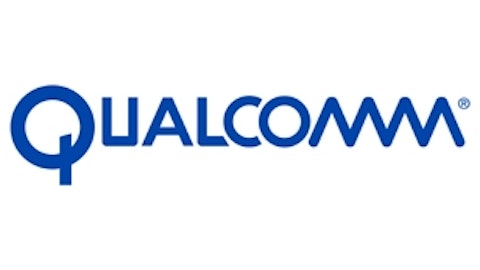I recently fell into a trap when analyzing the debt at Deere & Company (NYSE:DE). When looking at the balance sheet, I concluded that the company had $9 billion in short-term borrowings and a further $22.5 billion in longer-term borrowing, which gave a total debt level of $31.5 billion for 2012. This meant (or so I believed) that Deere’s debt was up 32% from the previous year’s figure of $24 billion.
In addition, with my figure of $31.5 billion for 2012, Deere & Company (NYSE:DE) would have been trading on a net debt-to-equity level of 4.2 (420%) — but I was seriously wrong.
You see, Deere & Company (NYSE:DE) has a finance division that lends money to customers to buy Deere’s sometimes very expensive equipment. The finance division borrows money to lend out to customers at a higher rate.
At the end of 2012, Deere’s finance division had just under $27 billion of financing receivables and financing income outstanding. Of that amount, $23 billion was unrestricted and $3.7 billion was securitized. These receivables are themselves placed as assets on the balance sheet.
However, to finance these receivables, Deere & Company (NYSE:DE) has issued long- and short-term debt in the form of notes and debentures, which has added to the company’s total debt.
| Metric | Equipment Operations | Financial Services | Total |
|---|---|---|---|
| Short-Term Debt | $7,676 | $2,130 | $8,989 |
| Long-Term Debt | $5,445 | $17,008 | $22,453 |
Figures in millions.
In practice, debt related to financial services operations is offset by financing receivables on the balance sheet.
So most websites will display Deere’s total debt as being roughly $31.5 billion, but debt that is related to operations totals only $13 billion. The rest is offset through financing receivables.
Not the only one
It’s not just Deere & Company (NYSE:DE) that has this odd-looking balance-sheet structure. Caterpillar Inc. (NYSE:CAT) and Ford Motor Company (NYSE:F) are at it, too.
On Caterpillar Inc. (NYSE:CAT)’s balance sheet under assets, there is a section for finance receivables, which shows that the company has $23 billion in financial receivables resulting from loans to its customers.
Like Deere, Caterpillar Inc. (NYSE:CAT) has borrowed to finance these loans, and in total, including debt for capex spending, Caterpillar Inc. (NYSE:CAT) has $40 billion of debt, for a debt-to-equity level of roughly 2.4 times.
However, if we strip apart the debt, we get the following:
| Metric | Equipment Operations | Financial Services | Total |
|---|---|---|---|
| Short-Term Debt | $636 | $4,651 | $5,287 |
| Current Portion of Long-Term Debt | $1,113 | $5,991 | $7,104 |
| Long-Term Debt | $8,666 | $19,086 | $27,752 |
| Total | $10,415 | $29,727 | $40,143 |
Figures in millions.
Caterpillar Inc. (NYSE:CAT)’s total debt that is related to equipment operations (capex spend) is $10,415 million, which gives Caterpillar Inc. (NYSE:CAT) an actual debt-to-equity level of 0.6.
Debt related to financing operations totals $29.7 billion. Once again as I mentioned with Deere, debt related to financial-services operations is offset on the balance sheet by financial receivables related to loans on equipment.
And finally, Ford
There are many other companies that practice this highly lucrative method of offering loans to customers, but Ford Motor Company (NYSE:F) has one of the biggest programs.
Sifting through Ford Motor Company (NYSE:F)’s financial statement, we find there are two sections — one for the automotive side of the business, and another for the financial side.
It would appear that the financial division of Ford Motor Company (NYSE:F)’s business is larger than its automotive division. As of the most recent 2012 annual report, the company had automotive assets of $86 billion and financial assets of $106 billion.
Nonetheless, a quick glance at Ford Motor Company (NYSE:F)’s liabilities appears to show that the company has $105 billion in debt; break this down, though, and there is a different story.
The automotive side of the business has $13 billion of long-term debt and $1.3 billion of short-term debt due within a year. The financial side of the business has $91 billion in long-term debt.
Here’s how the balance sheet breaks down.
Automotive
| Metric | Amount (in Millions) |
|---|---|
| Cash and marketable securities | $24,425 |
| Current debt | $1,386 |
| Long-term debt | $12,870 |
| Net cash | $10,169 |
Financial
| Metric | Amount (in Millions) |
|---|---|
| Cash and marketable securities | $11,500 |
| Finance receivables | $75,000 |
| Investment in operating leases | $15,036 |
| Debt | $90,800 |
| Net assets (cash and receivables-leases and debt) | +$10,700 |
The automotive side of Ford’s business has a net cash balance. The financial side of the business has nearly $91 billion in long-term debt and $15 billion invested in operating leases.
As with both Deere & Company (NYSE:DE) Caterpillar Inc. (NYSE:CAT), almost all of this financial debt, including operating leases, is offset by financial receivables. Indeed, Ford Motor Company (NYSE:F) is making a profit on this debt, as it is borrowing at a much lower rate than it is lending out to customers.
So rather than taking net debt figures for granted, it pays to do some research and discover the true make-up of company debt.
The article Dissecting Debt originally appeared on Fool.com.
Fool contributor Rupert Hargreaves owns shares of Caterpillar. The Motley Fool recommends and owns shares of Ford.
Copyright © 1995 – 2013 The Motley Fool, LLC. All rights reserved. The Motley Fool has a disclosure policy.






